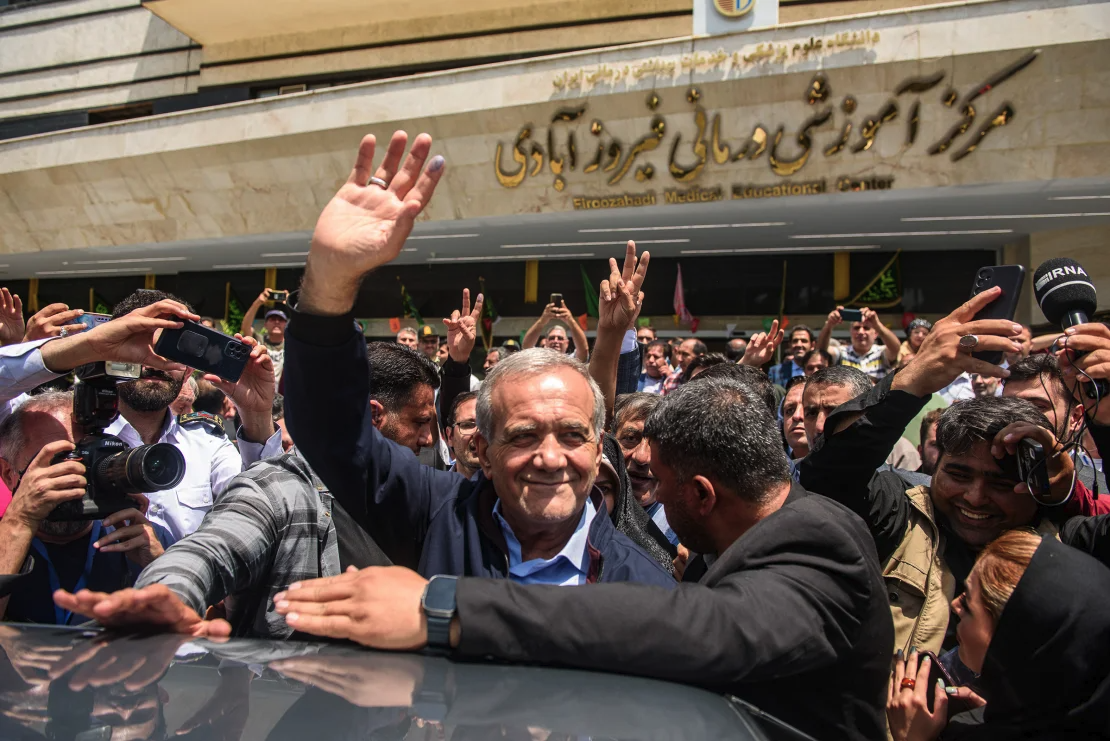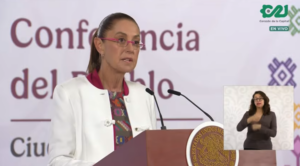
Published 06/30/2024 18:56 | Edited 06/30/2024 18:57
Reformist candidate Masoud Pezeshkian won the most votes in the first round of Iran’s presidential elections and will face hardline conservative Saeed Jalili in a runoff next week.
None of the four candidates got more than 50% of the vote in Friday’s election, leading to a runoff on July 5. The election had the lowest voter turnout for a presidential election since the Islamic Republic was established in 1979.
Pezeshkian, a reformist lawmaker, and Jalili, an ultraconservative former nuclear negotiator, who received the most votes, will contest the second round, according to Mohsen Eslami, a spokesman for the election committee.
Pezeshkian led with 42.5% of the vote, followed by Jalili with 38.6%, state news agency IRNA reported. Of the 60 million eligible voters, 24 million voted, resulting in a turnout of 40%, Eslami reported.
The results will be reviewed by the Guardian Council, the powerful 12-member body tasked with overseeing elections and legislation, before the two candidates restart their campaigns.
Early election
The snap election was held following the death of Iranian President Ebrahim Raisi in a helicopter crash on May 19 in the country’s remote northwest, along with Foreign Minister Hossein Amir-Abdollahian and other officials.
Two Conservatives withdrew their candidacies a day before the election to help consolidate the Conservative vote in favor of hardline candidates.
Pezeshkian was the only reformist candidate after dozens of other candidates were barred from running by the Guardian Council.
Voter apathy
Iran’s electoral process has been marked by voter apathy recently, embarrassing an establishment that relies on high voter turnout to bolster its democratic credentials and popular legitimacy.
National discontent has been evident in low voter turnout in both parliamentary and presidential elections in recent years. While Iran boasts an exceptionally high voter turnout, its last legislative election in March saw the lowest turnout since 1979, despite government efforts to mobilize voters.
Iran’s Supreme Leader Ayatollah Ali Khamenei urged Iranians to vote after he himself cast his vote in the election on Friday morning.
“People’s participation is part of the essence of the state, and the continued existence of the Islamic Republic and its status in the world are linked to people’s participation,” he said.
Masoud Pezeshkian
The two candidates competing in the next round of elections represent opposite sides of Iran’s political spectrum, and both have unsuccessfully run for presidential elections in the past.
A former health minister under reformist President Mohammad Khatami, Pezeshkian is a cardiac surgeon and lawmaker. He rose to prominence for his stance against the crackdown on pro-democracy protests in 2009 and the violence perpetrated by the moral police in 2022 after a young woman died in police custody for failing to comply with the Islamic Republic’s strict dress code for women.
Pezeshkian lost his wife and one of his children in a car accident in 1994, and has since devoted himself to politics. He ran for president in 2013 and 2021, but failed to advance. At 69, Pezeshkian comes from an ethnically mixed family – his father is Azeri and his mother is Kurdish, and Persian is not his first language. This strengthened his image among Iran’s minorities, but also left him vulnerable to xenophobic attacks from some opponents.
Saeed Jalili
Jalili is a hardliner known for his uncompromising stance toward the West. He is a longtime security adviser to Khamenei and a former soldier in the Islamic Revolutionary Guard Corps (IRGC) during the Iran-Iraq war. As the chief negotiator of the 2015 nuclear deal, he led Tehran’s efforts to obtain sanctions relief in exchange for controls on its nuclear program. He has been described by Iranian media as a “firm and meticulous negotiator who made no concessions” during the nuclear negotiations.
Political context
The elections took place at a delicate time for the Islamic Republic, with the country embroiled in growing tensions with Israel and its Western allies, triggered by the war in Gaza and the advance of Iran’s nuclear program.
Iran’s struggle with the United States has left its economy in tatters, crippled by years of U.S. sanctions, a weakened local currency and high inflation. While the Supreme Leader is the final arbiter for most decisions in Iran, the elected president will be the face of the Islamic Republic abroad.
Iran’s presidential election is being closely watched for its internal and external implications, with the second round promising to be decisive for the country’s political future.
Source: vermelho.org.br

